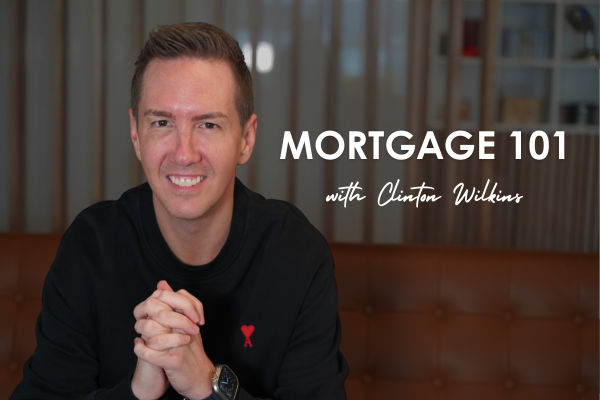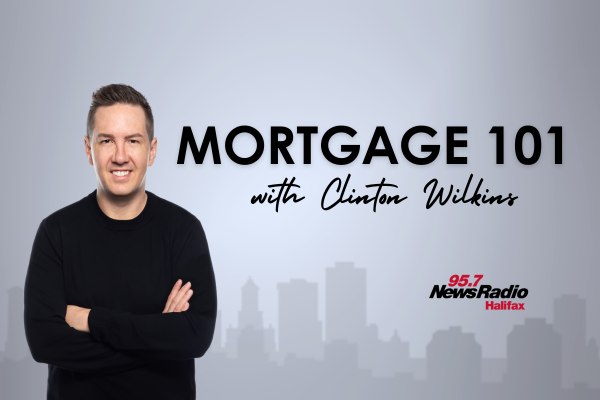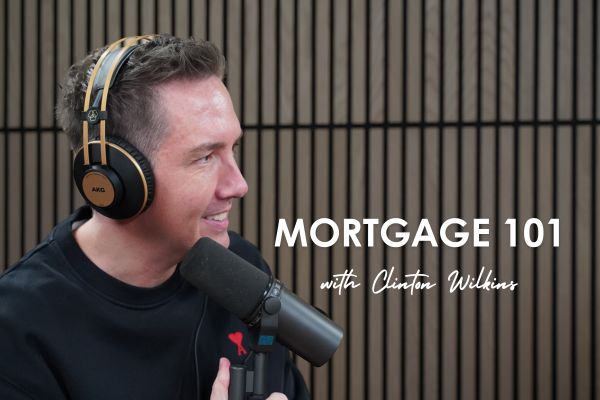Todd Veinotte and Clinton Wilkins discuss the evolving landscape of mortgage lending, highlighting its complexities and the importance of staying informed.
Mortgage 101 – new physicians mortgage program | September 2021 Part 4
In this episode of Mortgage 101 with Clinton Wilkins and Todd Veinotte, as heard on News 95.7, the guys talk about the details of the mortgage program that helps new physicians get into homeownership while they’re at the end of their residency, or just starting their fill practice.
Mortgage 101 with Clinton Wilkins & Todd Veinotte: New physicians mortgage program | September 2021 Part 4
Don’t feel like watching the video? Check out the transcript below.
Transcript:
New physicians mortgage program
Todd Veinotte: [00:00:00:02] So let’s talk about the new physicians program. How long has this been around? What are the ins and outs? What can you tell us about it?
Clinton Wilkins: [00:00:06:15] I think there have been different iterations of programs that have been available, probably for years, to be honest. Lenders love doctors. You know, they love professionals, but they really, really love new physicians. The reason being is, new physicians are really at the beginning of their career.
We don’t know necessarily how much they’re going to make, but you know, we have a bit of a table that we’re able to use based on kind of what their specialty is, if they’re going to be a general practitioner. And depending on, what year they are in the residency or how long ago they started practicing. We have basically a future income program. And the way that it works is you have to put down a larger down payment.
So a normal, you know, permanent resident or Canadian can buy their first home with as little as five per cent down. You know, we talk about that all the time, Todd, right? With this program, it’s a minimum of 10 per cent down. Obviously, it’s a little bit more risky. You know, if you’re in your residency, like maybe things will go sideways and you won’t be able to practice. I don’t know.
But it’s a minimum of 10 per cent down. Five percent needs to be from your own resources, or gifted. And the other five per cent, believe it or not, can come off of your professional line of credit, which is an unsecured line. So it’s a really great program. You can take five per cent right off your line of credit, and a lot of new doctors are, you know, given, you know, $100,000 line, a $250,000 line, a $500,000 line kind of when they’re starting med school and kind of going through.
Using professional line of credit for the down payment
Todd Veinotte: [00:01:43:20] What would the interest rate be?
Clinton Wilkins: [00:01:44:29] Usually at that prime.
Todd Veinotte: [00:01:46:02] Yeah.
Clinton Wilkins: [00:01:46:17] So it’s not a bad rate. Obviously, it’s maybe more than what you can get on a mortgage, but it’s not a bad rate for really an unsecured line of credit. And really, you can get into your first home with as little as five per cent from your own resources, or from a gift. Now, of course, taking the other 10 per cent off the line of credit, that’s going to cost you some interest. But we’re pretty sure you can probably pay it back at some point.
And you certainly can do 20 per cent down. And if you do the 20 per cent down to avoid the high ratio mortgage insurance, they’ll allow, 10 percent of it would need to be your own money and then the other 10 could come off the revolving professional line. So it’s a great program. And I think it’s a great program because we have a med school here in Halifax.
We touched on it a little bit before and you know, our current government says that they’re going to fix health care. I don’t know if it’s fixable, Todd, but you know, the power to them, and health care is certainly a hot ticket item. And in a lot of rural areas across Nova Scotia and really across Canada, there’s a shortage of physicians that really want to practice in rural areas.
The first home is the most important
Clinton Wilkins: [00:02:57:14] It takes a special person. My sister-in-law is a doctor. You know, I say that and she’s practicing in more rural Ontario. She’s from Ontario and went to med school in Ontario. So, you know, they had some great programs to retain and really get new doctors to work in more rural areas. And I suspect our government is going to do the same.
And, you know, I think it’s really important that we are here to help new physicians because obviously they probably have a lot of debt. They’ve been in school for many, many years and they probably haven’t made a lot of money. But we’re here to work with them to get them into their first home.
And that first home is so important. It’s so important because they’re going to put ties down in the community, build roots, and usually in the stats are that if someone owns a home in the community, they’re more likely to stay within the community and really be, you know, a great member and community member of that community. So, you know, I think it’s important.
I think it’s important for us, especially where we do have a more aging population. I think it’s something important to really attract, maintain and, you know, you know, build relationships with new physicians, you know, across our province and we’re really happy to be able to help.
Four year eligibility window for the new physicians mortgage program
Todd Veinotte: [00:04:17:06] So when do you when do they qualify for when they get their first job? What are the qualifications?
Clinton Wilkins: [00:04:23:02] So they can actually get a mortgage when they’re in their residency, so they don’t even have to have, you know, graduated the program. They can get a mortgage at the end of their residency, or they could have recently started maybe their first job. A lot of doctors are self-employed, so they don’t necessarily get a salary or, you know, deductions at source.
The way that it works is that we basically confirm how much they make now, and, you know, maybe that’s very low like I’ve seen, you know, some residents and they’re making, you know, 40, 50, 60, 70 thousand a year. So I mean, it’s not like it’s no money, but they have a lot of debt and a lot of education, you know, to go through.
And kind of the rule of thumb is they need to kind of be in their last 24 months of the residency or their fellowship, or they need to have started practicing within the last 24 months. So it’s really kind of like a four year kind of window where this program will work.
The program looks at a table for how much the new physician will probably make
Todd Veinotte: [00:05:24:19] So once they can be, they don’t look at obviously the $40,000, $50,000, or $60,000 they’re making then you talked about this.
Clinton Wilkins: [00:05:32:02] We still have to verify it, but there’s a table. So, for example, we are able to use qualification income for medical residents in their first or second year, like $185,000. So obviously that’s a lot more than they’re making today.
And medical students that are in their third year, we can use $225,000 and depending on what their specialty is, if it’s family medicine, then it’s $225,000. But depending on what their specialty is, it’s sometimes $300,00, it’s $360,000, you know, it’s $380,000, you know, there’s a number that we can use, regardless of how much money they’re making kind of as they first start out, you know, being a practicing doctor or if they’re in the residency.
So, you know, I think that it’s a really, it’s a great program. And I’ve actually done more and more lately. You know, it’s we get referred by bank branches because of the complexity. You know, I think one of the great reasons is, you know, we can do a lot of things over the phone and over the internet. And, you know, maybe we have more flexible hours. And as we know these residents and these new docs are busy. Yeah, chances are they’re working right and we’re able to accommodate that.
Large debts and other struggles for new physicians looking for homeownership
Clinton Wilkins: [00:06:56:05] And I think that’s great. But we’re also able to understand the complexities of really what they’re going through and their debt load. Not everyone gets that. And I think I kind of have a little bit of a unique, you know, position, really, because my sister-in-law is a physician. So you really, I get the struggles.
She has four kids and three of those kids she had basically during her education. So she had them basically while she’s going through med school. And while she’s going as a resident and as a new doctor, she was having kids and it’s not easy. And you know what? I think it takes a really special person that wants to practice medicine.
And you know, when we’re talking about income at $225,000 or $300,000, you know, that’s basically what we’re using. I know doctors that make more than that and I know doctors that make less than that. But that’s kind of the numbers of the bank and the insurers are willing to basically take a risk on. And it’s because frontline workers like doctors are really so needed.
And I think really at such a high demand, at least here in our community, having the programs in place, I think hopefully will help, you know, attract and retain, you know, some of these individuals.
Extra risks and costs with the new physicians program
Todd Veinotte: [00:08:12:23] Are there any safeguards in place for the lender in case obviously people, doctors, these are projected earnings, but people get hurt, they leave the business, there’s burnout, whatever it might be. So do they have any of these insurance vehicles in place?
Clinton Wilkins: [00:08:26:27] If they don’t put down 20 per cent, they would still have that high ratio insurance so that high ratio insurance,
Clinton Wilkins: [00:08:32:01] CMHC would cover their butt.
Clinton Wilkins: [00:08:33:28] Basically yeah. And it’s not CMHC that offers this program. It’s the other private insurers that offer it.
[00:08:39:10] Which is what again? [00:08:39:28] Genworth, or it’s not worth anymore, it’s Sagen, and Canada Guarantee. So they’re offering this program because they believe in the importance of running this type of program. We believe in it.Yeah, and it actually comes at a higher cost to the borrower. It’s a higher insurance premium, so normally when a buyer buys a home and they put down 10 per cent, Todd, their insurance cost is 3.10 per cent. In this scenario, if they borrow that, you know, half of the down payment off their line of credit, the insurance cost goes up to 4.10 percent.
So that’s a sunk cost that that individual is not getting back because it’s a bit of a higher risk. You identified it. It is risky.
[00:09:28:26] Is riskier. Yes. [00:09:30:23] Probably, they have a great earning potential. Probably it’s going to be okay. [00:09:34:01] Probably, but who knows.Clinton Wilkins: [00:09:34:21] But it’s kind of like mortgage lending: There’s a lot of probabilities. It’s a snapshot in time. Right now they’re not making money, but we think they’re going to. And yes, medical doctors do have a good income earning potential. And I think it’s important to get any first-time home buyer into a home.
Qualifying for insurance under the program with your projected earnings
Todd Veinotte: [00:09:58:05] What about having their own insurance like outside of that, like a disability that you would sell at,
Clinton Wilkins: [00:10:03:16] Yeah, I think it’s important. Like we offer creditor insurance. You know, our main provider is through Manulife and we provide coverage for life and disability through Manulife and through one of the big five that we use. We also are able to offer their creditor insurance.
Todd Veinotte: [00:10:21:21] But here’s my question a lot of that insurance you have to validate the income. And if doctors have not yet made that income, how do you put somebody in a disability to pay them $7,000 a month when they’ve never made $7,000 a month?
Clinton Wilkins: [00:10:35:00] Usually, it’s creditor insurance. Yeah, it’s a really good question. It’s creditor insurance. So basically it’s not necessarily income replacement, Todd. It’s more to cover the payment on the debt. And do I think creditor insurance is the be all and end all? Don’t get me wrong, I’m not an insurance person. I think in some cases, creditor insurance is more of a Band-Aid type solution.
It’s good to have some coverage going out the door. I know people that walk out the door and they get hit by a car. It’s less than ideal. Usually, when I get calls from consumers that are wondering if they have insurance, it’s usually calling to see if they have disability. Usually, they had an accident, they had an illness where they’re not able to work, became disabled for whatever reason.
Get insurance, period.
And a lot of the insurers will have coverage that, for disability is usually 24 months, Todd. A handful of times, and I’ll say maybe a couple of times a year, we do have clients pass away. We’ve done almost four thousand transactions. We have a lot of clients.
Todd Veinotte: [00:11:39:03] It’ll happen.
Clinton Wilkins: [00:11:39:18] It’ll happen. It’s reality. And I think with COVID, the one thing that we need to think about as well: We went through a lot of scary times that we thought there could be mass casualties.
There’s still mass casualties and lots of areas of Canada, certainly in the U.S. and across the globe. We ended up being pretty OK here, but I think a lot of people have looked in the mirror and also maybe identified their financial obligations.
And I think the rule of thumb is for insurance. It’s eight times your annual income and a lot of people are like, I have insurance at work. That’s probably one times your income. That’s not even going to put you basically in the ground. So we can certainly talk about that a little bit more.
Todd Veinotte: [00:12:22:18] Yeah, let’s talk a little bit more about that and as well as get a market update and mortgage rates and some other things sound good?
Clinton Wilkins: [00:12:27:14] Yeah, that sounds great.
Todd Veinotte: [00:12:28:07] Okay, Mortgage 101 Your Guide to Homeownership with Clinton Wilkins and myself, Todd Veinotte, here on News 95.7, we’ll be right back.
If you have any questions, get in touch with us at Clinton Wilkins Mortgage Team! You can call us at (902) 482-2770 or contact us here.


